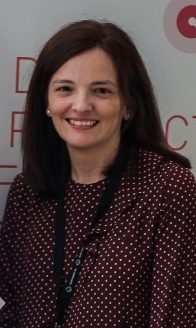Tests of other products for children
Products for children are a broad group of products that can be classified as consumer goods, regulated by Directive 2001/95/EC of the European Parliament and of the Council of 3 December 2001 on general product safety. But they may also be considered as toys and therefore regulated by Directive 2009/48/EC of the European Parliament and of the Council of 18 June 2009 on toy safety.
Performing safety tests to prove compliance with technical safety measures is essential to guarantee that these products are safe and comply with the directive that regulates them. In this sense, at AIJU we offer you our laboratory where we carry out physical, chemical and flammability safety tests on products for use by children in accordance with European and international regulations and legislation.
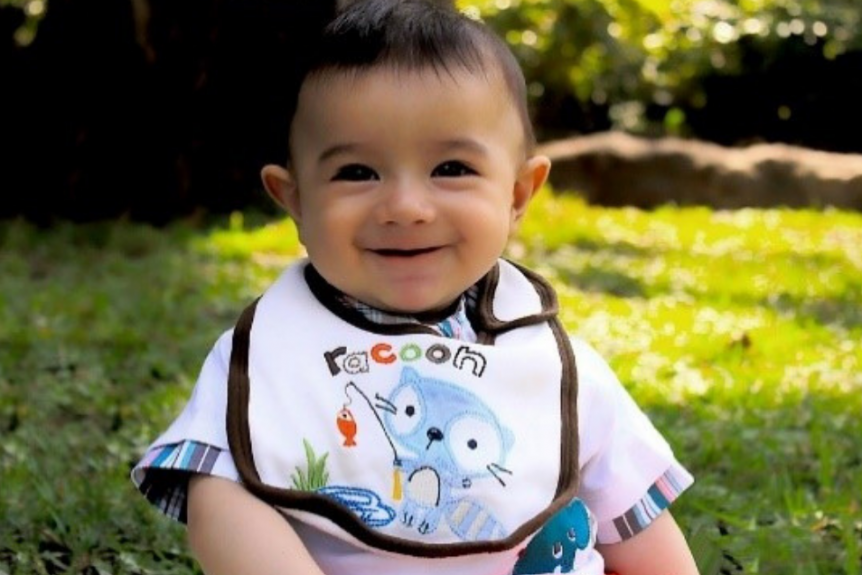
Testing services for other products for children
Promotional articles for children are products given as a gift, and whose purpose is to advertise a brand and/or boost sales. They purpose a wide group of products with very different characteristics and, in that sense, it is essential that they are classified beforehand to determine if they are regulated by a specific directive and/or can be tested according to safety standard(s).
We perform safety tests on promotional articles, following European and international regulations, as well as applicable legislations (REACH, food contact, etc…).
School supplies or material is a category of products ranging that includes stationery, materials for handicrafts and other similar products (graphic instruments, paints, modelling pastes, adhesives, solvents, etc.), used by children at school.
Royal Decree 2330/1985 on the safety regulations governing toys, children’s products and joke items was repealed as far as toys are concerned following the publication of Royal Decree 880/1990, but it is still valid for school supplies and materials. Therefore, according to Royal Decree 2330/1985, school material must comply with toy safety standards EN 71.
At AIJU we perform safety tests on school supplies, following European and international regulations, as well as applicable legislation (REACH, CLP, etc…).
At the same time, if school supplies include caps, we perform safety tests on caps for writing and marking instruments destined to be used by children up to the age of 14, in accordance with European regulation UNE 92019 (ISO 11540).
Textile articles for baby layette and clothing (baby clothes, bibs, children’s cot duvets and bumpers or protectors, sleeping bags, etc.) are products in direct contact with the body and skin of the baby, so it is essential that laboratory tests be conducted to ensure the safety of the product in terms of its design, resistance, absence of small parts and of toxic and harmful substances.
At the AIJU laboratory we perform physical-mechanical, chemical and product information safety tests on textile articles for baby layette and clothing in accordance with existing safety standards:
- Safety tests on children’s clothing. Cords and drawstrings according to standard EN 14682
- Safety tests for baby clothes according to standard UNE 40902.
- Safety tests for baby and children’s footwear according to standard UNE 59300.
- Safety tests for children’s cots duvets according to EN 16779-1:2018.
- Safety tests for children’s cot bumpers according to EN 16780:2018.
- Safety tests for children’s sleeping bags for use in cots according to EN 16781:2018.
Buoyancy aids used in swimming lessons are designed to help people, especially children, to learn how to swim. They are designed to give the user a positive buoyancy in the water, but by themselves they do not eliminate the risk of drowning. It is fundamental that these products are used correctly and under constant supervision.
At the AIJU laboratory we perform safety tests and labelling revisions according to the following European standards:
- Buoyant aids to be held (EN 13138-2).
- Buoyant aids to be worn (EN 13138-1).
During these tests we check the puncture resistance of inflatable articles, for example, and we revise the warnings and markings on the product.
Children’s bicycles are transport vehicles propelled by the children themselves by means of pedals. They are used by children from a very early age, and there are even bicycle models for small children without pedals or balance bikes.
At AIJU we perform safety tests on children’s bicycles. Depending on the height of the bicycle saddle, the bicycle can be classified as a toy bicycle and comply with EN 71, or as a children’s bicycle and comply with international standard EN ISO 8098. These safety tests are designed to guarantee the resistance and durability of bikes, as well as the safety of the product.
The market of children´s products is very dynamic and it evolves faster than the normalisation processes. Therefore, there are certain children’s products for which there is still no applicable safety regulation.
When there is no specific applicable regulation for a children’s product, we at AIJU perform a tailor-made safety assessment for these products, applying the reference technical documents (CEN/TR 13387, EN 71, etc.) and our own experience in safety tests for children’s products. To carry out this safety assessment, we start from the information provided by the manufacturer about the expected user, the useful life of the product, etc.
At AIJU we perform risk assessment of children’s products and other products that, although not intended for children, are in the child’s environment and whose risks must be controlled.
Risk assessment makes it possible to identify and assess the hazards the product might entail through the level of risk (critical, high, medium, low) associated with each of them. With this service you will be able to detect and minimise the risks and hazards of your product before making it available to consumers. Risk assessment is a very useful tool for making decisions as to the risk management measures you should take, and the scope of such measures.
In compliance with European legislation, all products must be safe and must not present any risk, or only minimal risks, compatible with the use of the product and considered admissible within the respect of a high level of protection of people’s health and safety.
Critical tests are partial tests that we apply at the express request of the applicant, and they are used by the manufacturers to control production in its different phases.
The definition of critical tests can be carried out in different ways:
- If we have previously tested the products at AIJU, we select these critical points considering the results and/or the weak points obtained in previous tests.
- If the products have not been previously tested at AIJU, we can select the critical points according to the criteria of the technical staff at AIJU, considering the most characteristic safety aspects in each product category. In these cases, we select the critical points once we have received the product in question and it has been inspected by the technicians at AIJU.
- Additionally, critical tests may be defined and selected directly by the requester of the test.
Children’s products must be adequately labelled to help to identify the essential characteristics of the product, as well as the manufacturer or the person responsible for its marketing. They must also contain the necessary warnings for the safe use of the product, as well as instructions for use, cleaning, maintenance, assembly, etc., depending on the type of article.
At AIJU we carry out the assessment and/or revision of this labelling according to the applicable safety regulation, if any, and in addition, considering the applicable safety legislation, among others:
- Royal Decree 1468/1988, of 2 December, approving the Regulations on labelling, presentation and publicity of industrial products destined for direct sale to consumers and users.
- Regulation (EC) No. 1935/2004 of the European Parliament and of the Council of 27 October 2004, on materials and articles intended to come into contact with food, and repealing Directives 80/590/EEC and 89/109/EEC.
- EU Regulation No. 1007/2011 on textile fibre names and related labelling of the fibre composition of textile products.
- Royal Decree 928/1987 on the labelling of the composition of textile products.
Products for children are a wide group of products that can be classified as consumer goods, and therefore they are regulated by Directive 2001/95/EC of the European Parliament and of the Council of 3 December 2001 on general product safety.
Some of them may also be considered as toys and therefore regulated by Directive 2009/48/EC of the European Parliament and of the Council of 18 June 2009 on toy safety.
At AIJU we help you to classify your product by performing a diagnosis of the regulation and legislation applicable to it. To do this, by means of an image of the product, its main characteristics, expected users, labelling, etc., we can determine the safety regulation and legislation applicable to the product.
Regulation (EC) No. 1272/2008 on the classification, labelling and packaging of chemical substances (CLP) regulates how and when these dangerous substances and mixtures must be classified within the European market.
Before a product identified as a substance or a mixture can be rolled out on the European market, its potential classification as dangerous must be assessed for labelling and packaging purposes.
We perform the study of the safety data files and other appropriate information, to offer you the revision of the classification and labelling.
Regulation (EC) No. 1223/2009 on cosmetic products establishes requirements on the labelling and composition of these products.
It is important that consumers are given the appropriate information indicated in the regulation for the quality of a product. Therefore, we perform the revision of this information and of the composition of the cosmetic product to verify its compliance with the regulation and to increase its value.
The REACH Regulation is the European Regulation governing the use of chemical substances in consumer products. It imposes obligations on both the manufacturer of the substance and the user thereof, the purpose of which is not to permit products to be placed on the market that contain substances whose use has not been authorised.
This regulation is especially important for manufacturers of children’s products. To verify compliance with REACH obligations, it is essential that manufacturers manage the adequate and necessary documents. We help you with that management through the following activities:
- Establishing validity and acceptation criteria for the documentation provided by suppliers.
- Establishing supplier evaluation criteria and actions to be followed.
- Review of company documentation for the exchange and compilation of supplier information.
SVHC substances (Annex 14) are known to be of particular concern due to their characteristics – carcinogenic, mutagenic, reproductive toxicity, persisting in the environment, bioaccumulative – or because they may entail other dangers (effects in the endocrine system, for example). The use of such substances requires a special authorisation, and some of them have restricted use for certain applications (Annex 17 of the REACH Regulations).
Substances such as phthalates, cadmium, lead, azo dyes are the most frequent substances in most consumer products, and they are also the most in demand. The services we offer are:
- Phthalate tests.
- Azo dyes and colourings tests.
- Cadmium and lead tests.
- Benzene tests.
- Toluene tests.
- Organotin compounds tests.
- Polycyclic aromatic hydrocarbons (PAHs) tests.
- Cr (VI) tests.
- Bisphenol A tests.
Due to the increasing demand for children’s products with safety and quality guarantees, at AIJU we offer our clients our certifications and seals.
The “CHECKED QUALITY” mark for children’s products is a tool that allows the end user to distinguish your product from those of the competition, and to offer them the assurance that they are buying an article with safety and quality guarantees.
In addition to the safety demands of the European Union, at AIJU we request additional requirements depending on the type of product, and we perform an annual follow-up that guarantees an homogeneous level of quality for these articles.
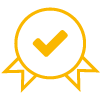
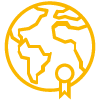
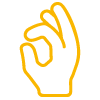
- Safety tests on children’s products are necessary to guarantee that the products are safe. The performance of these tests at AIJU guarantees the international acceptance of the obtained test reports, because it implies that the safety tests have been performed in a European and international reference laboratory, recognised by the competent authorities (both in market inspection and in import control) and accredited by the ENAC.
- Our principles of collaboration are: speed of response, service quality, confidentiality of information, and customer satisfaction. The flexibility and customer orientation of AIJU’s laboratory facilitate communication and understanding between all parties involved.
Children’s products classified as consumer goods are regulated by Directive 2001/95/EC of the European Parliament and of the Council of 3 December 2001 on general product safety, the purpose of which is to guarantee that products placed on the market are safe.
The general product safety directive refers to rules as “tools” which make it possible to assess product conformity. Therefore, performing safety tests to prove compliance with the regulations is essential for the marketing of children’s products and to guarantee their safety.
In order to carry out the safety tests, we first of all identify the regulations and legislation applicable to the specific product. If there is no such applicable regulation, we perform a safety test of the product applying all the available technical reference documentation, and taking the intended user into consideration.
Then we perform the determinations and tests applicable to the product, obtaining the corresponding test reports which explain the obtained results and conclusions.
The test reports obtained at AIJU are accepted internationally, since they are carried out in an accredited laboratory, located in Europe, and recognised by the competent authorities, both in market inspection and in import control.
- CEN TC 52 ‘toys’ (Toys)
- CENELEC/TC61 WG7(IEC TC 61 MT 26) “Electric toys”
- CEN/TC 252 ‘Childcare articles’
- CEN/TC 207 ‘Furniture’
- CEN/TC 248 ‘Textiles and textile products’
- CEN/TC 52 WG 3 Working Group on Mechanical and Physical Properties.
- CEN/TC 52 WG 11, To Evaluate Criteria for the Interpretation of EN-71/1 standards: Mechanical and Physical Properties, EN 71/8: Activity Toys, Swings and Slides, and EN 71-4: Trampolines for Domestic Use.
- CEN/TC 52 WG 5 “Chemical Properties” Expert Group on Chemical Properties.
- CEN/ TC 52 WG 5/TG 2: Migration of Certain Elements.
- CEN/ TC 52 WG 12 Interpretations and Improvements of Chemical Standards in the EN 71-series.
We participate in the International Committee that draws up safety regulations for electric toys.
- CEN /TC 252 WG 1 “Seating and body care”: Working group on seating articles and childcare.
- CEN /TC 252 WG 3 “Wheeled transportation”: Working group on wheeled transportation.
- CEN /TC 252 WG 5 “Feeding, drinking, sucking and similar functions”: Work group on childcare products for feeding, drinking, sucking and similar functions (soothers, feeding bottles, soother holders…).
- CEN /TC 252 WG 6 “General and common safety specifications” Working group in which the general requisites for childcare regulations are drawn up.
- CEN /TC 207 WG 2 “Requirements for children’s and nursery products”: Working Group on children’s furniture.
- CEN TC 248 WG 20 “Safety of children’s clothing”: working group in charge of safety in children’s clothing.
- CEN /TC 248 WG 34 “Risk in the sleeping environment”: working group in charge of safety in textiles used in the sleeping environment.
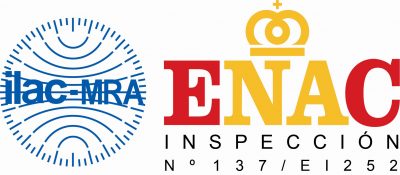
At AIJU we have over 30 years of experience in performing safety tests on children’s products. With proven technical competence, given that we are the first laboratory in Spain accredited by ENAC (the National Certification Entity) since 1989, according to ISO/IEC 17025, to perform these tests (accreditation No. 6/LE016).
We are an active member of several national and international standard-setting forums and committees related to child safety. Participation in these committees guarantees knowledge of and constant updating in technical aspects, criteria and pre-regulatory work.
Committees in the field of the safety of children’s products, in which AIJU takes part:
AIJU’s laboratory has facilities in which to carry out tests on children’s products, equipped with all the necessary equipment to carry out all such tests: climatic chambers, test masses and gauges, adjustable ramps, fatigue benches, etc. Much of this equipment has been custom developed by AIJU’s technical staff.
We have specific rooms and advanced equipment to carry out all chemical tests applicable to children’s products:
- Gas chromatographers with mass spectrometry detection (GC-MS).
- Gas chromatographers with flame ionisation detection (GC-FID).
- Liquid chromatography with time-of-flight mass spectrometry detection (LC-QTOF).
- High-performance liquid chromatography with diode-array (HPLC-DAD) and fluorescence detection.
- Inductively coupled plasma – optical emission spectrophotometry (ICP-OES).
- Optical emission spectrophotometry with mass spectrometry detection (ICP-MS) with and without coupling with liquid chromatography.
- Ultraviolet-visible spectrometry.
